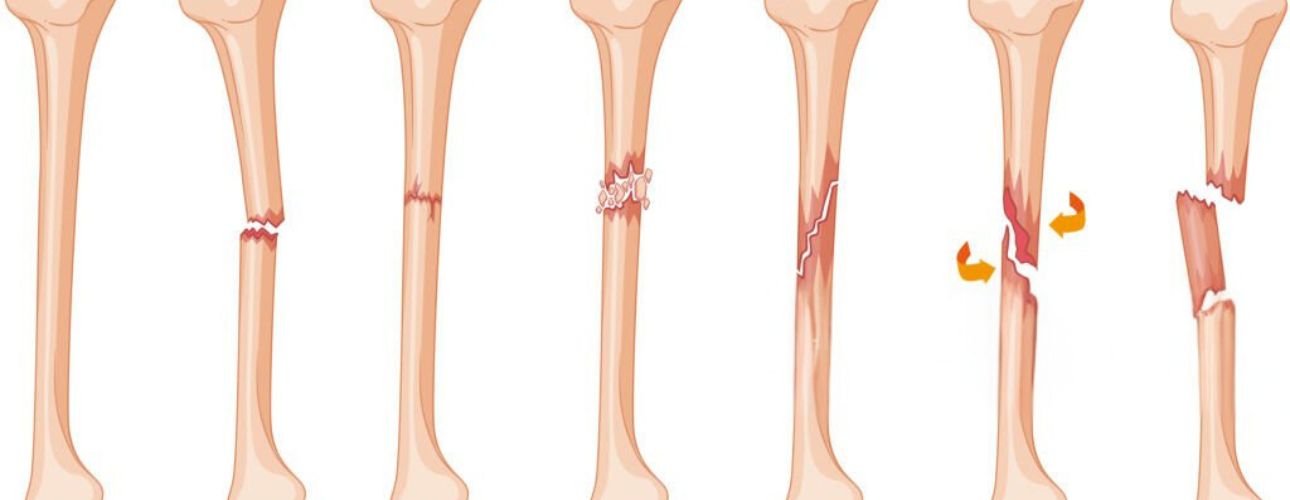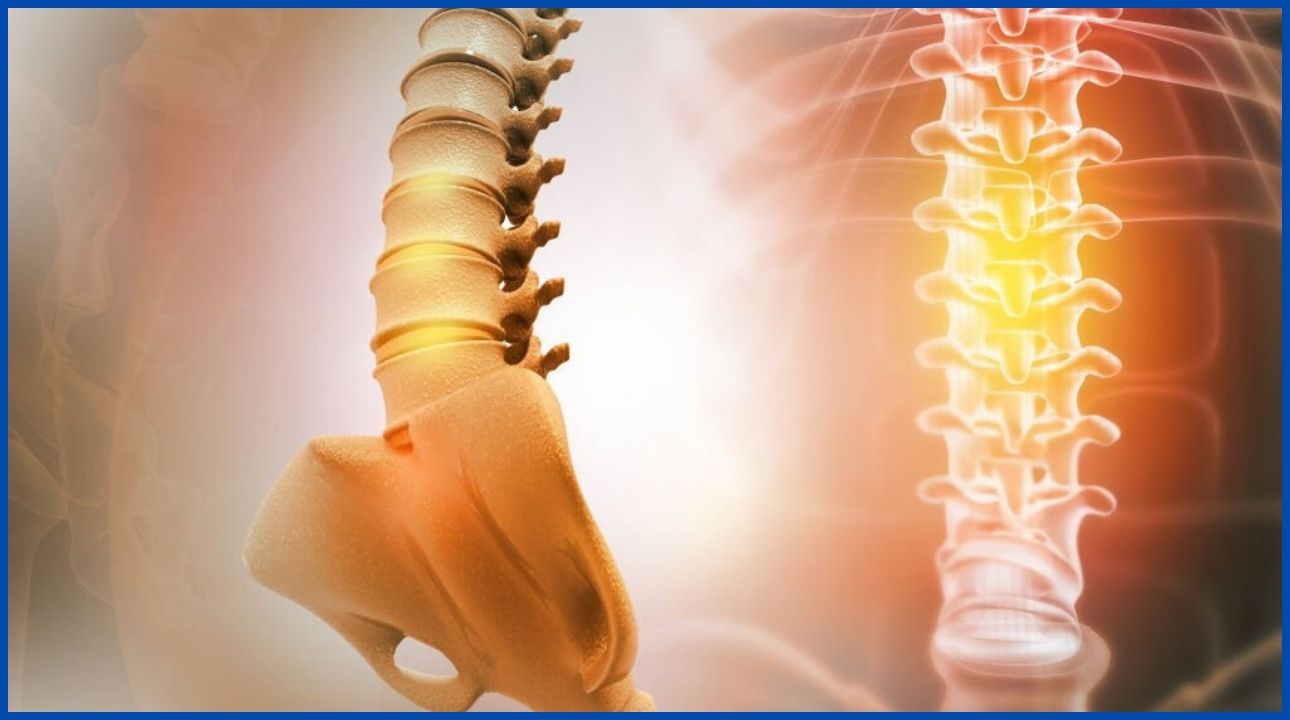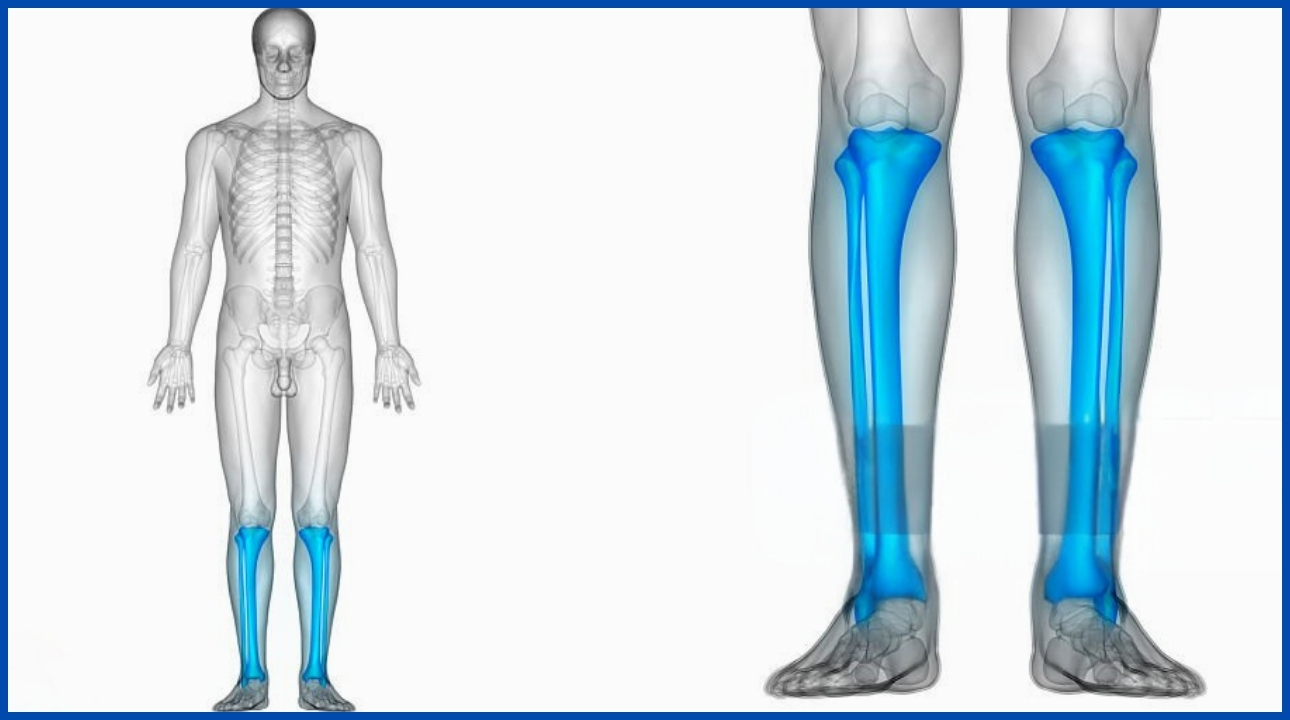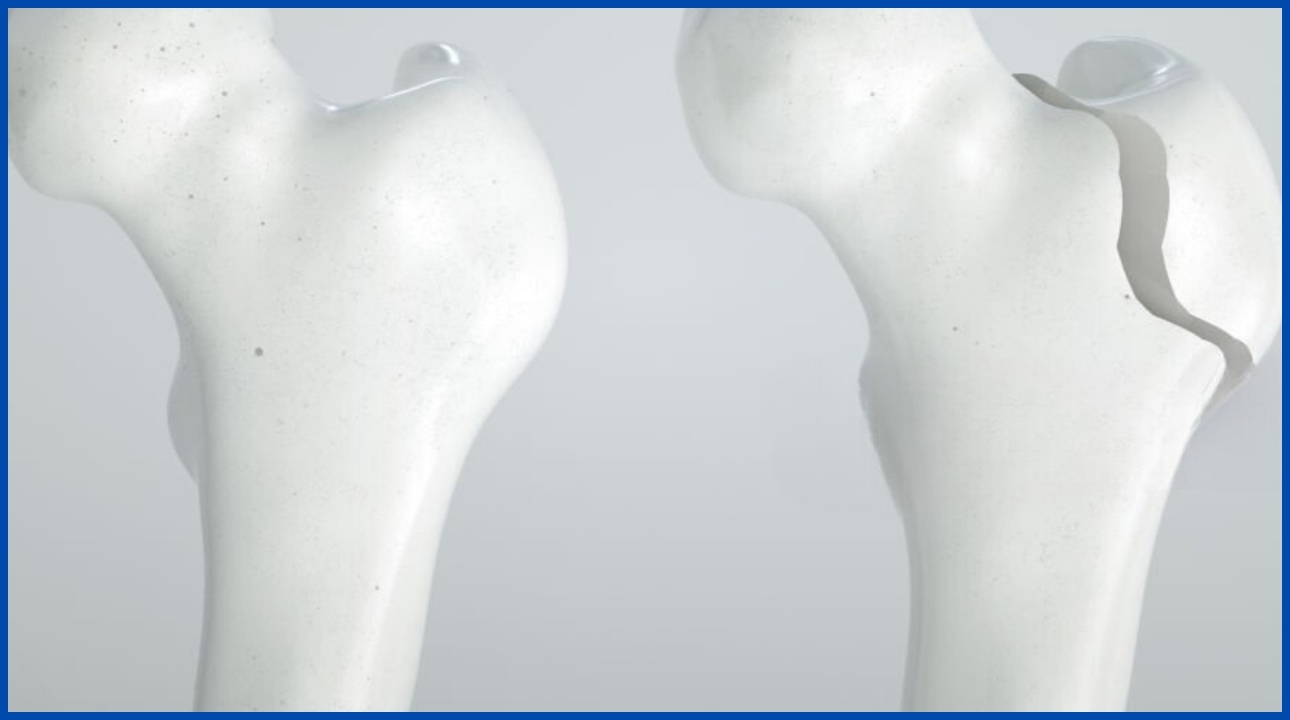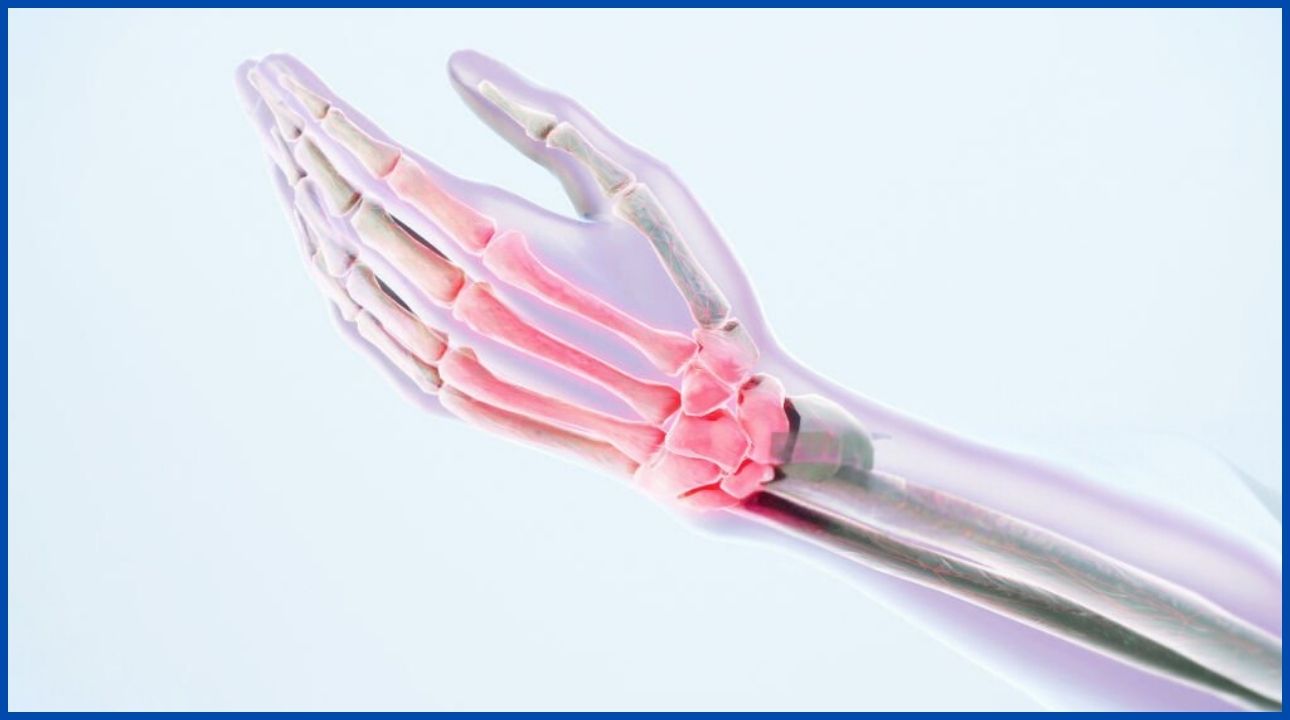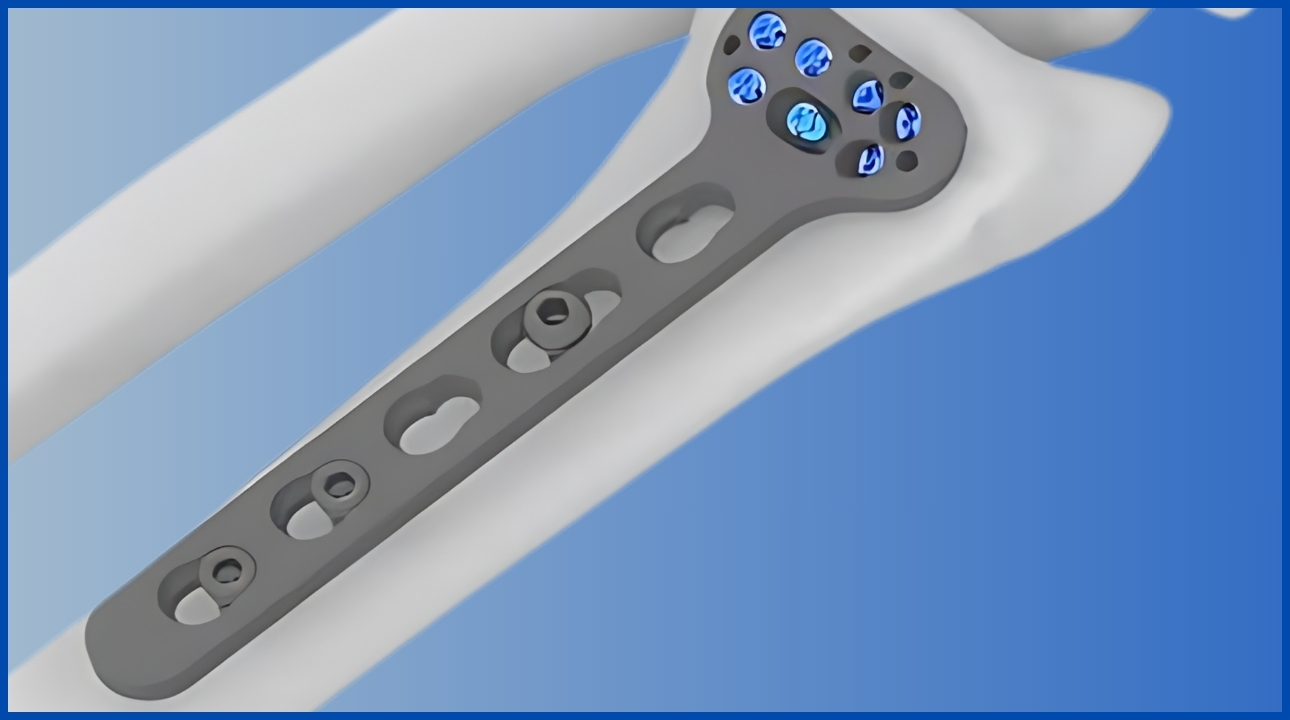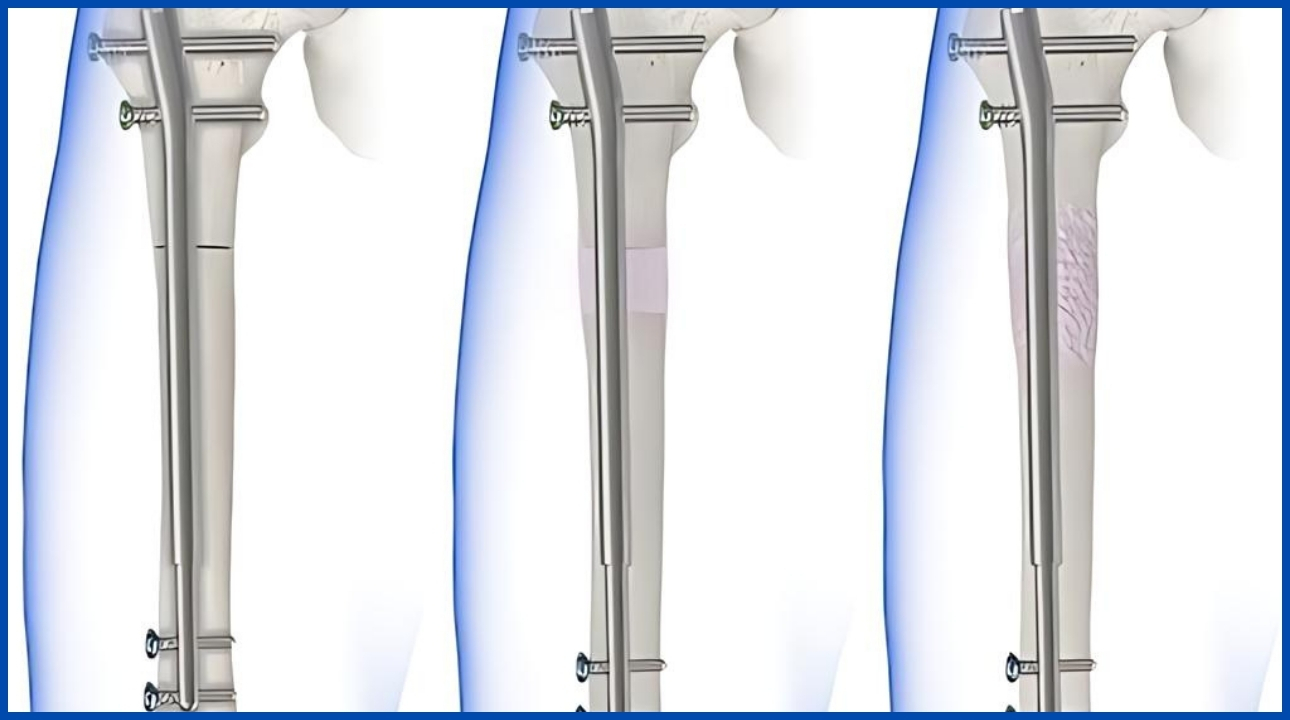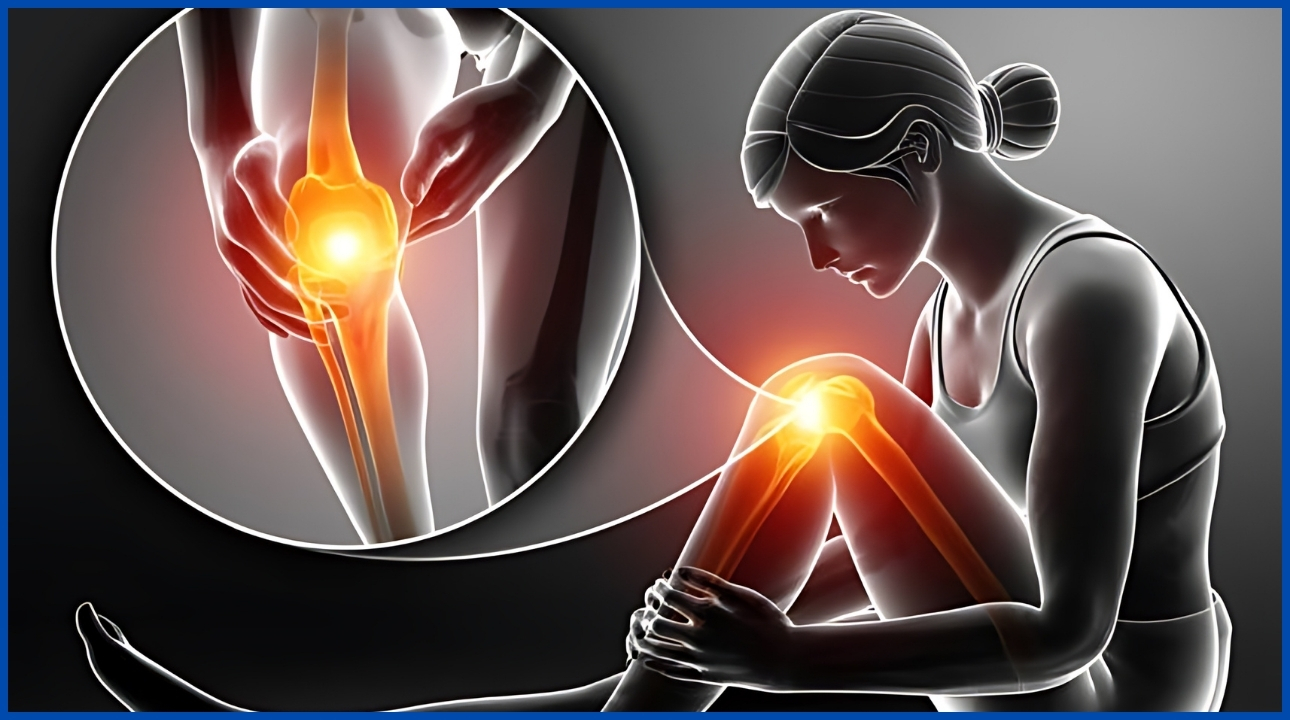
Blog
Types of Femoral Fractures
- Transverse Fracture: A horizontal fracture across the femoral shaft, perpendicular to the bone’s long axis, often caused by direct trauma.
- Spiral Fracture: Characterized by a twisted pattern along the femur’s length, typically resulting from rotational forces like twisting injuries.
- Oblique Fracture: A diagonal fracture across the shaft, generally due to a mix of bending and twisting forces.
- Segmental Fracture: The femoral shaft is broken in multiple places, creating separate bone segments, commonly from high-energy trauma.
- Comminuted Fracture: The femoral shaft breaks into three or more fragments, often from severe impacts and high-energy trauma.
Symptoms of Femoral Bone Fractures
- – Severe pain in the thigh or groin, especially during movement
- – Swelling around the injured area, with rapid onset
- – Bruising or discoloration over the thigh or groin
- – Visible deformity or abnormal positioning of the leg
- – Inability to bear weight on the affected leg
- – Tenderness when touched
- – Limited range of motion due to pain and stiffness
- – Numbness, tingling, or weakness in the leg, potentially indicating nerve damage
- – In severe cases, a visible bone protrusion through the skin (open fracture)
- Causes of Femoral Fractures
Femoral fractures are often caused by:
- – Falls or impacts during physical activity
- – Direct trauma, as seen in accidents
- – Bone-weakening diseases, such as osteoporosis or cancer
- Treatment of Femoral Fractures
- Pain Management: Pain relief is essential, as femur fractures can be extremely painful.
- Surgery: Often necessary for fracture repair, especially for open fractures. Methods include:
- – Metal Pins, Plates, or Screws: Used internally or externally to stabilize the bone.
- – Intramedullary Nailing: A procedure where a nail is placed in the bone’s center and fixed with screws, keeping bone fragments aligned.
- Surgery: Often necessary for fracture repair, especially for open fractures. Methods include:
- Splints, Slings, or Casts: Used to maintain bone alignment during healing.
- Traction: Applied shortly after the injury or during healing to maintain bone position.
- Physical Therapy: Recommended post-surgery to restore strength and functionality.
Implants Used in Femoral Bone Fracture Repair
5.0mm Proximal Femur Cable LCP: Anatomically contoured for the femoral shaft, with a polished design to minimize soft tissue irritation. Non-linear locking holes enhance bone strength post-plate removal.
5.0mm Distal Medial Femoral L-Type: Designed for distal femur fractures, this system provides dual plate fixation for superior strength, minimizing fragment displacement and supporting early mobility.
5.0mm Distal Femur LCP: A fixation system for comminuted distal femur fractures, featuring a locking mechanism for enhanced stability and bridging plate fixation for multi-fragment fractures.
5.0/6.5mm Proximal Femur LCP Type 2: This plate provides stress distribution to prevent femoral head collapse, featuring an anatomically contoured fit and Radiolucent Aiming Device for precise percutaneous fixation.
DHS Plate: Designed for minimally invasive surgery, this plate enables stable fixation for fractures with improved angular stability, simplifying surgical techniques for bone alignment.
DCS Plate: Its low-profile design minimizes the risk of bursitis, with enhanced stability to support distal femur or subtrochanteric fractures.
5.0/6.5mm Proximal Femur LCP: This anatomically pre-shaped plate addresses complex proximal femur fractures. Featuring locking screws and Combi-holes, it allows for versatile fixation and stability around intramedullary implants.
5.0mm Broad LCP: A broad-profile plate that provides flexibility for locking or non-locking screws, enhancing construct stability and reducing the risk of screw loosening.
6.5mm/7.0mm CC & BON-HCS:
Headless Compression Screw (HCS): A headless design that allows it to be countersunk for stable fracture fixation.
Cancellous Cannulated Screw (CC): A hollow-core screw used with a guide wire for precise insertion, providing strong fixation in cancellous bone areas.
ARTIQLX Bipolar Hip Prosthesis: A hip implant for femoral neck fractures, allowing pivoting for mobility and joint protection without replacing the entire joint.
FNS (Femoral Neck System): A system for femoral neck fractures, offering fixed-angle gliding fixation with controlled collapse similar to dynamic hip screws, enhancing stability while minimizing angulation.
Expert Femur Nail: Provides biomechanical stability and supports minimally invasive techniques, enabling quicker functional recovery post-surgery.
PFN: An implant for proximal femoral fractures in the trochanteric region, using closed intramedullary fixation.
PFNA-II: An intramedullary nailing system for various proximal femur and femoral shaft fractures, with enhanced stability and antirotation features.
Syrus Femur Interlocking Nail: Suitable for closed and open diaphyseal fractures, sub-trochanteric fractures, pseudarthrosis, and corrective osteotomies, providing reliable fixation for complex femur fractures.
Other Blog
Stay Connected
We're here to assist you! If you have any questions or need information about the products available on our website, please don’t hesitate to reach out.
Join the Conversation
Subscribe to our newsletter and follow us for updates and offers. We’d love to stay in touch!
Location
- Plot No. 1/2, 2&3, Survey No. 605, JD Industrial Area -1 Ravki - Makhavad Road, Ravki, Rajkot, Gujarat - 360 004


